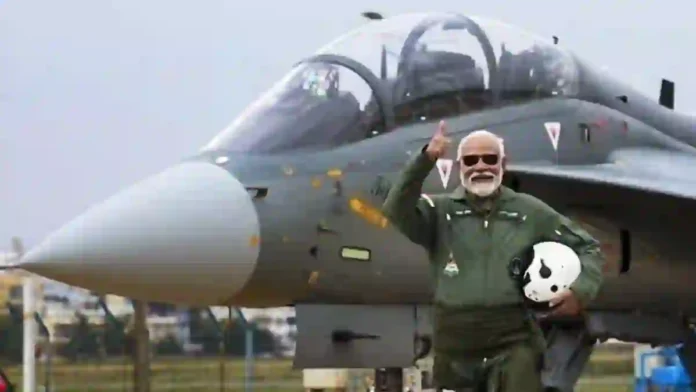India has emerged as the world’s fourth-largest military spender, allocating $83.6 billion in 2023, according to a report by the Stockholm International Peace Research Institute (SIPRI). This expenditure represents a 4.2% increase from the previous year and is part of India’s broader strategy to modernize its military capabilities amid ongoing regional tensions, particularly with China along the Line of Actual Control (LAC).
India’s defence strategy has shifted towards self-reliance in military production under the “Make-in-India” initiative. Historically, India has relied heavily on foreign military imports from countries like Russia, France, and Israel. However, recent efforts aim to reduce this dependency by boosting domestic production capabilities . Approximately 75% of India’s military procurement budget in 2023 was allocated to domestically produced equipment, highlighting this commitment to self-sufficiency.
India has realised that whoever controls aerospace controls the planet. Aerospace requires cutting-edge technologies, and obsolescence sets in early. Last year, the world spent $2.44 trillion on defence, of which 40% was on aerospace. Therefore, aerospace is a priority area. India needs new platforms, while existing ones must be upgraded with advanced technologies wrote Air Marshal Anil Chopra (Retd).
While India needs to accelerate the design and development and production of fighter aircraft, clearly the IAF needs to get back numbers through a onetime import. The proposal to acquire 114 Multi-Role Fighter Aircraft (MRFA) from abroad is still stuck in a bureaucratic labyrinth, and a Request for Proposal, which solicits bids from qualified contractors, has still to be sent out. The eight contenders are Boeing F/A-18E/F Super Hornet, Boeing F-15EX Eagle II and Lockheed Martin F-21 of the US, French Dassault Rafale, Europe’s Eurofighter Typhoon, Swedish Saab JAS-39 Gripen E/F, and Russian Mikoyan MiG-35 and Sukhoi Su-35.
Despite being a top spender, India faces challenges in maximizing its military investments. A significant portion of its defence budget is consumed by personnel costs and pensions, which limits funding available for modernization efforts. The Indian armed forces continue to experience operational shortages in critical areas such as fighter jets and advanced weaponry, which underscores the need for more effective long-term planning and prioritization within its defence framework .
In a global context, total military spending reached $2.443 trillion in 2023, reflecting a 6.8% increase from 2022. The United States remains the largest military spender at $916 billion, followed by China at $296 billion and Russia at $109 billion . India’s position as the fourth-largest spender is significant, especially as it navigates complex geopolitical dynamics with neighbouring countries.
This strategic shift towards self-reliance and modernization is crucial for India as it seeks to enhance its defence posture and address emerging security challenges in an increasingly volatile global landscape.
Agencies




